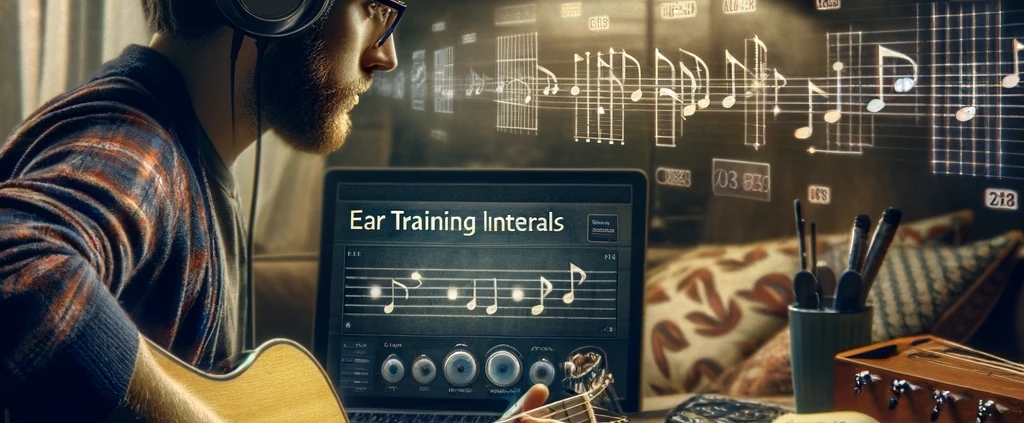Training your ear to recognize musical intervals is a fundamental skill that enhances your ability to play by ear, improvise, and understand music more deeply. This guide combines researched techniques and personal insights to help you achieve precise interval recognition, turning you into a more versatile and competent musician.
The Importance of Ear Training
Ear training is the process of developing your ears to identify pitches, intervals, scales, and chords. For guitarists, this skill is invaluable as it allows you to transcribe music, tune your instrument by ear, and communicate more effectively with other musicians. Recognizing intervals—the distance between two notes—is particularly crucial as it lays the foundation for building chords and understanding melodies.
Using Reference Songs
One effective method for learning to recognize intervals is to associate them with familiar songs. Each interval has a distinct sound character, which can be remembered more easily by linking it to a well-known melody. Here are some examples of intervals paired with songs that prominently feature them:
- Minor Second: The ominous opening of the “Jaws” theme.
- Major Second: The first two notes of “Do-Re-Mi” from The Sound of Music.
- Minor Third: The iconic riff of Deep Purple’s “Smoke on the Water”.
- Major Third: The cheerful start of the chorus in The Beatles’ “Ob-La-Di, Ob-La-Da”.
- Perfect Fourth: The opening of Wagner’s “Bridal Chorus” (often referred to as “Here Comes the Bride”).
- Tritone (Flat Fifth): The first two notes of “Maria” from West Side Story.
- Minor Sixth: The jump in the opening riff of Ozzy Osbourne’s “Crazy Train”.
- Major Sixth: The famous NBC chimes.
- Minor Seventh: The beginning of Jimi Hendrix’s “Stone Free”.
- Major Seventh: The starting notes of Norah Jones’s “Don’t Know Why”.
By using these songs as a mnemonic device, you can quickly recall and identify intervals in various musical contexts.
Systematic Practice
To effectively train your ears, incorporate a variety of exercises into your routine:
- Functional Ear Training: Practice recognizing intervals within the context of scales and chords. Use software or apps that provide real-time feedback and allow you to customize your training sessions.
- Sing the Intervals: Vocalizing intervals helps reinforce their sound in your mind. Try singing an interval before playing it on your guitar, then check your accuracy.
- Interval Repetition: Choose a song that uses a specific interval prominently. Listen to that segment repeatedly, sing along, and then try to replicate the interval on your guitar without music.
- Use Technology: There are numerous apps designed for ear training that include games and challenges, making the process engaging and effective.
Creating a Routine
Consistency is key in ear training. Dedicate at least 10 minutes a day to practicing intervals. Start with the intervals you find most challenging and gradually work your way to those you are more comfortable with. Over time, your ability to discern intervals will improve dramatically, enhancing your overall musicality.
Embracing the Journey
Ear training is not just about technical growth—it also enriches your emotional connection to music. As you become more proficient in identifying intervals, you’ll find yourself engaging with music on a deeper level, appreciating the intricacies of composition and improvisation more fully.
Conclusion
Recognizing musical intervals is essential for any guitarist looking to deepen their understanding of music. By using familiar songs as references, engaging in targeted practice, and being consistent with your training, you can develop a keen ear that will greatly benefit your playing and musical expression. Remember, every session brings you one step closer to mastering the beautiful language of music.


